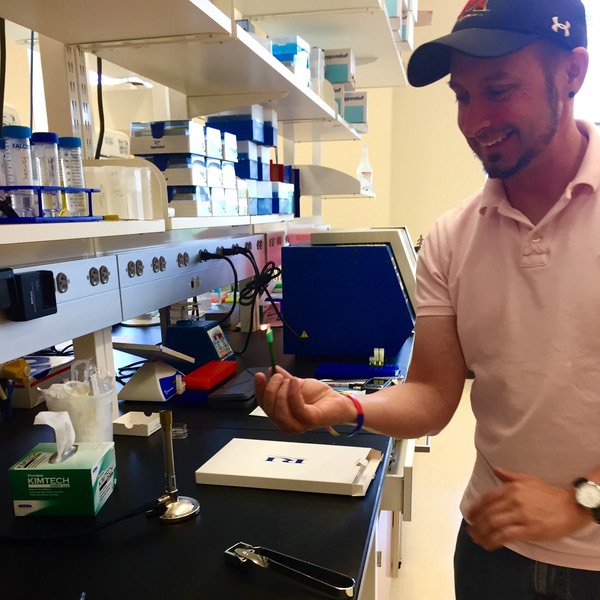Simon Lailvaux (PI)

Current Students
Leighanne joined the lab in Fall 2023. She is interested in sleep in Anolis lizards.
Hall of Fame

Mahaut's dissertation work integrated physiology, behavior, and performance with a general focus on cognition and brains. In addition to experimentally investigating links between locomotor training and brain size/mitochondrial function in green anoles, she also tested for the role of behavioral flexibility in facilitating the spread of brown anoles through the southeastern US over the last several decades. Mahaut previously participated in studies looking at the effect of hypoxia on performance and physiological traits in wall lizards and how water restriction impacts reproduction in viviparous lizards. She is currently back in Europe, where her activities are suspicious.

Fadeke joined the lab as an undergraduate and defended her PhD dissertation in 2023. She worked on the factors affecting male coercive ability and female mating resistance. She manipulating biogenic amines, primarily octopamine, in male and female house crickets (Acheta domesticus) and measured how the resultant changes in performance and behavior during mating affect both male calls and mating interactions between males and females. She has also looked at the effects of antennae loss on longevity, physiology, and aggression in A. domesticus and Teleogryllus commodus. Fadeke is currently at large in Las Vegas.

Jamie studied the effects of the maternal environment on hepatic expression of IGF1 and IGF2 in green anoles. She found that IGF2, which in humans and mice is not expressed postnatally, is not only expressed at higher rates compared to IGF1 in adult female green anoles, but these two genes also show different expression patterns in response to variation in the maternal energetic environment. In addition, two other genes (involved in protein and carbohydrate metabolism respectively) that are commonly used as housekeeping genes in mice also vary their expression patterns in green anole lizards. Finally, Jamie showed that the maternal energetic state affects both egg and hatchling phenotypes. Following a postdoc at Michigan State, Jamie left academia to follow the money.

Gina tested for spatial and temporal effects of malaria infection in Anolis sabanus on the Caribbean island of Saba. In addition to doing all of her research during the COVID pandemic, she also solved the mystery of constant and repeated DNA contamination that she traced back to a gecko living in a fume hood.

Annie's dissertation work tested how trade-offs and constraints affect the evolution of performance and adaptive functional morphology. In addition to empirical work on performance in butterflies and lizards, Annie also developed quantitative genetic models to simulate performance evolution in response to the interplay between trade-offs, genetic constraints, and selection on multiple performance capacities. These simulation models show that individuals performing at variable, sub-maximal speeds experience less intense selection than those that never deviate from maximum performance.

Ed's PhD dissertation was aimed at understand how and why invasive brown anoles compete with and displace native green anoles. She found, among other things, that the presence of brown anoles in New Orleans causes local green anoles to select higher perches, as has been shown elsewhere, and that this displacement may be driven by heterospecific aggressive interaction between females.

For his thesis work David reconstructed the genetic and spatial relationships among members of a local population of green anole lizards and tested whether those individuals arrange themselves in the environment with regard to the size and/or relatedness of their neighbors. David went on to earn his PhD from the University of Maryland.

Alex's dissertation involved assembling the largest snake phylogeny to date and using it to test various hypotheses regarding snake evolution.

Catie tested whether the stereotyped A, B, and C displays of green anoles are context-specific by presenting anoles with different stimuli and measuring whether there any differencies in the frequencies of displays elicited by those stimuli.
